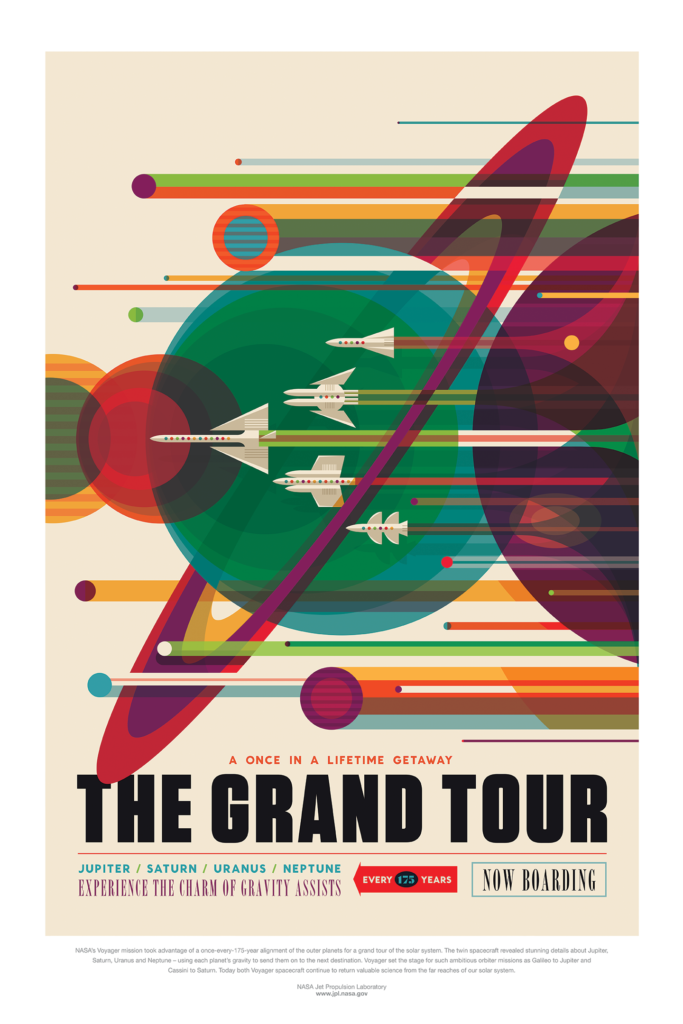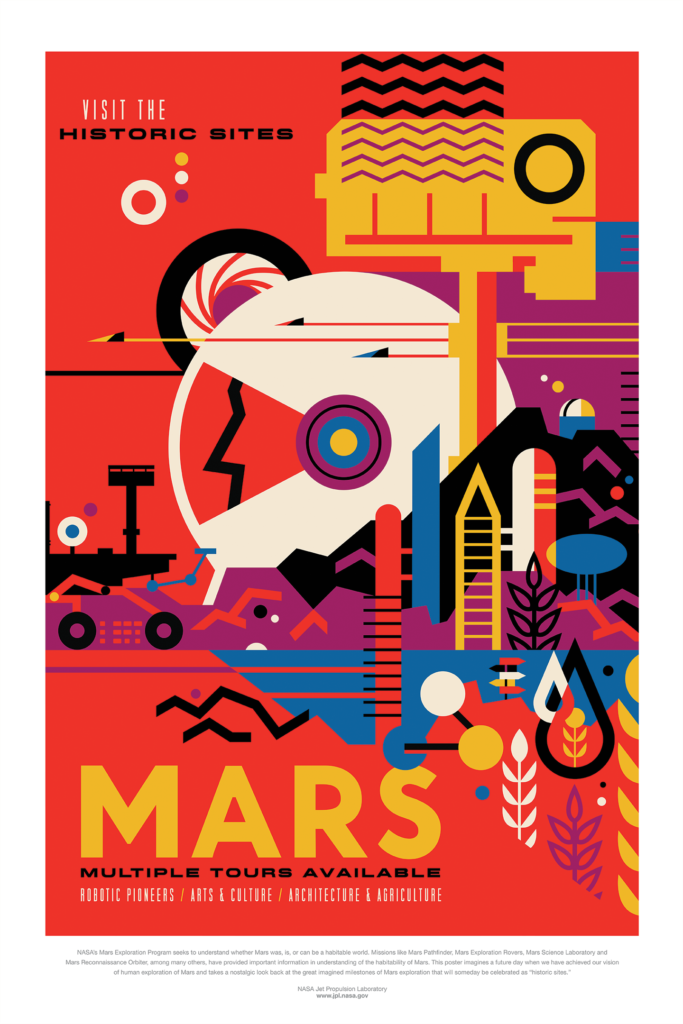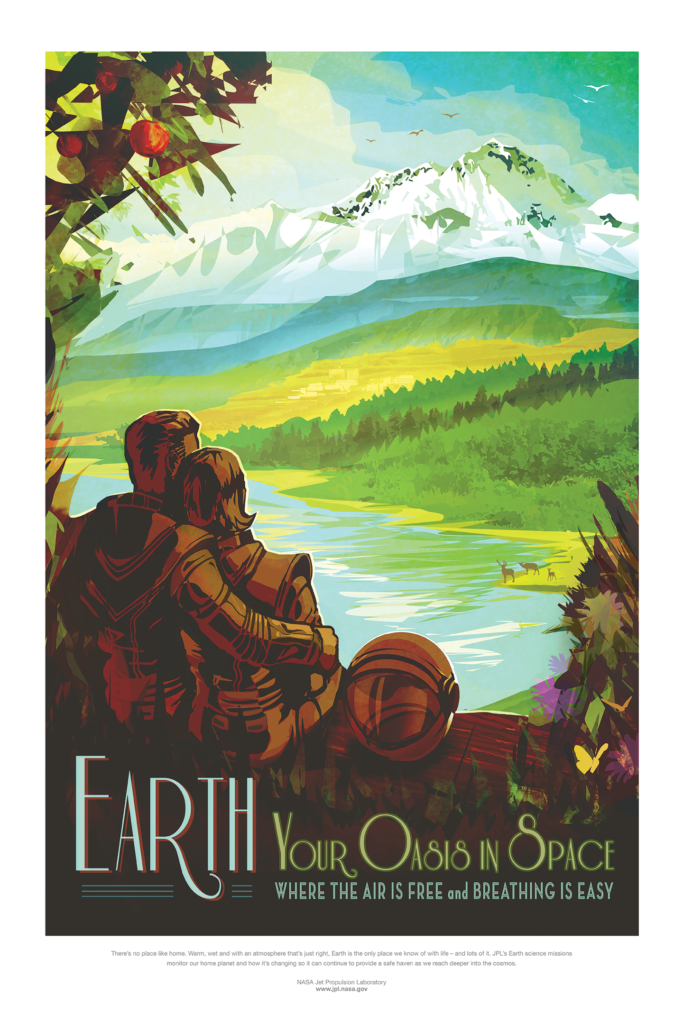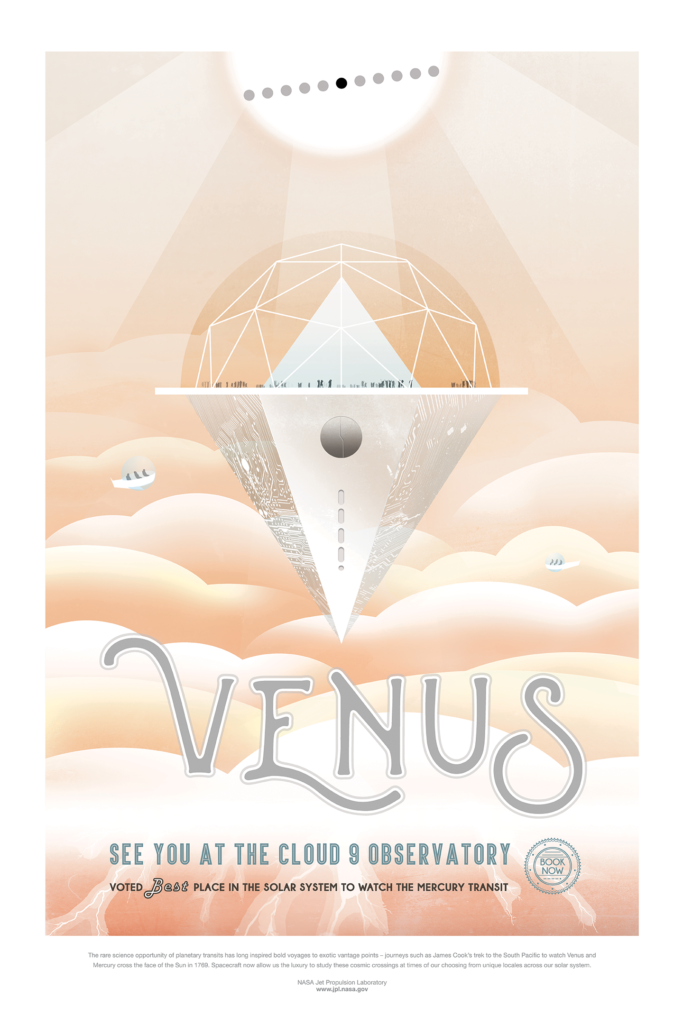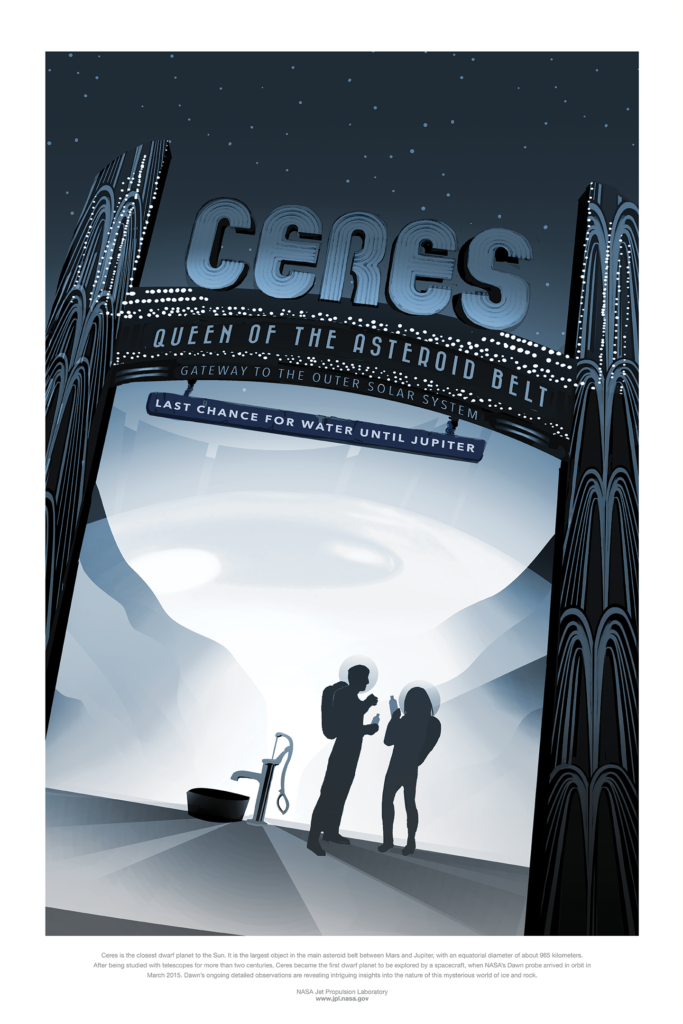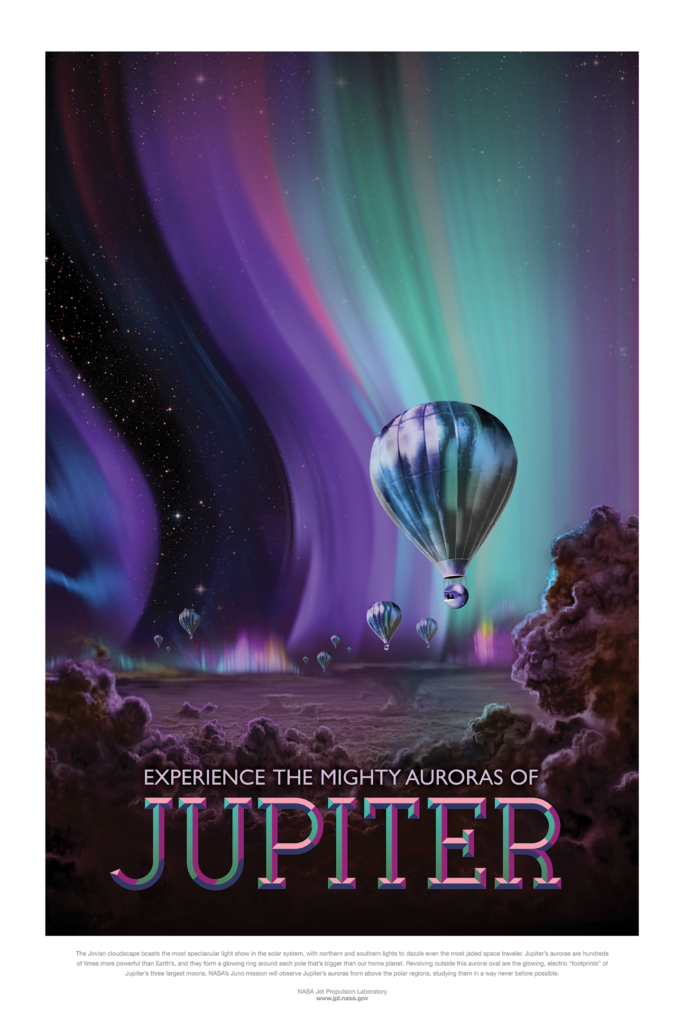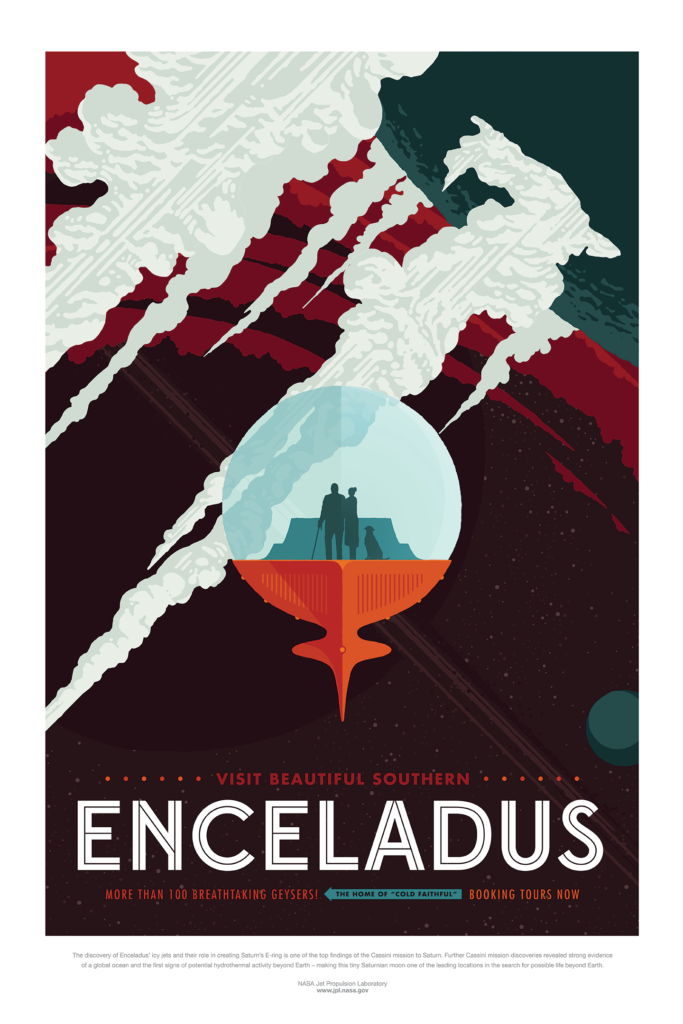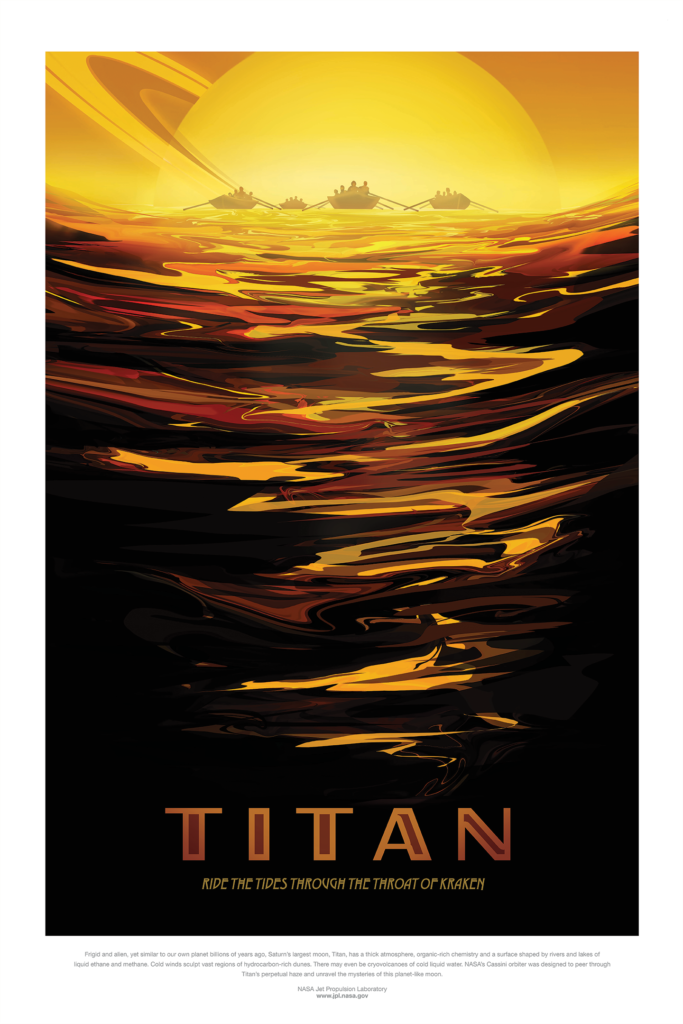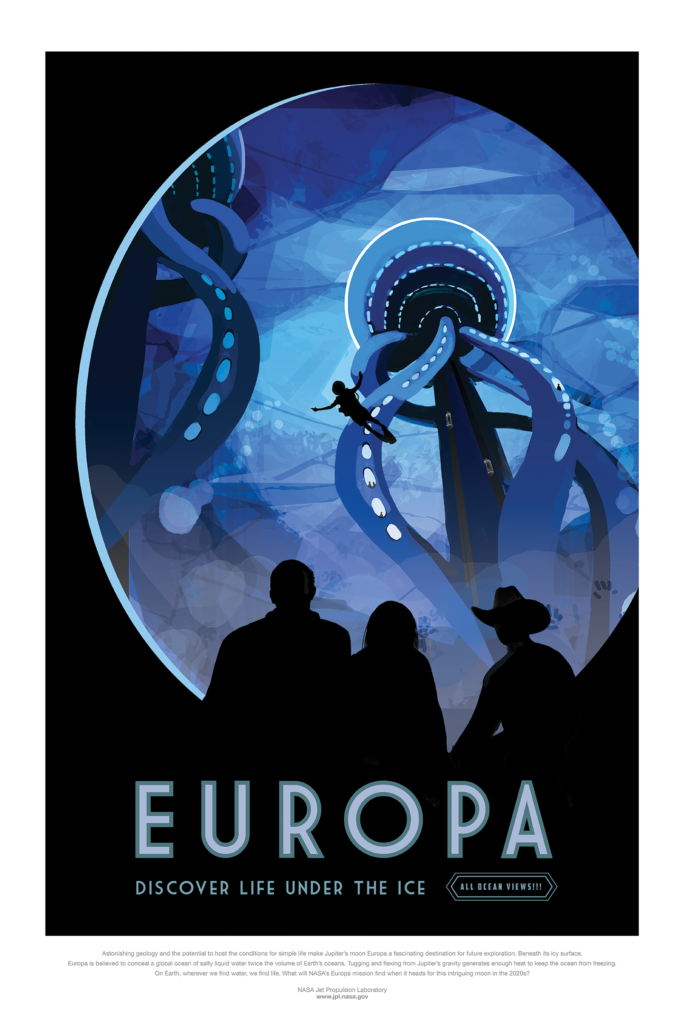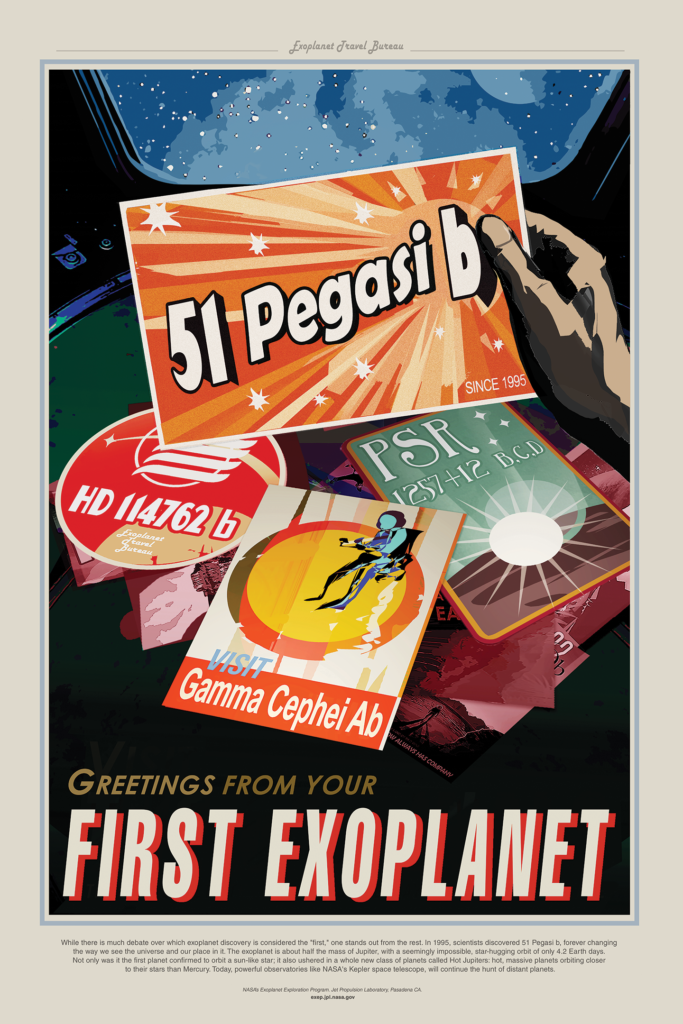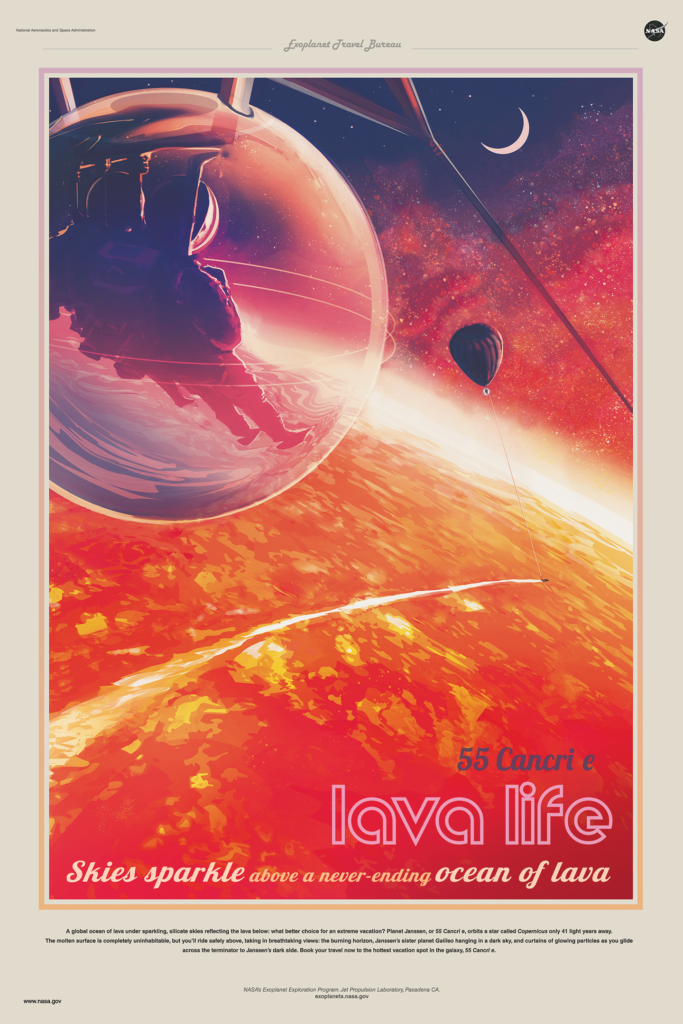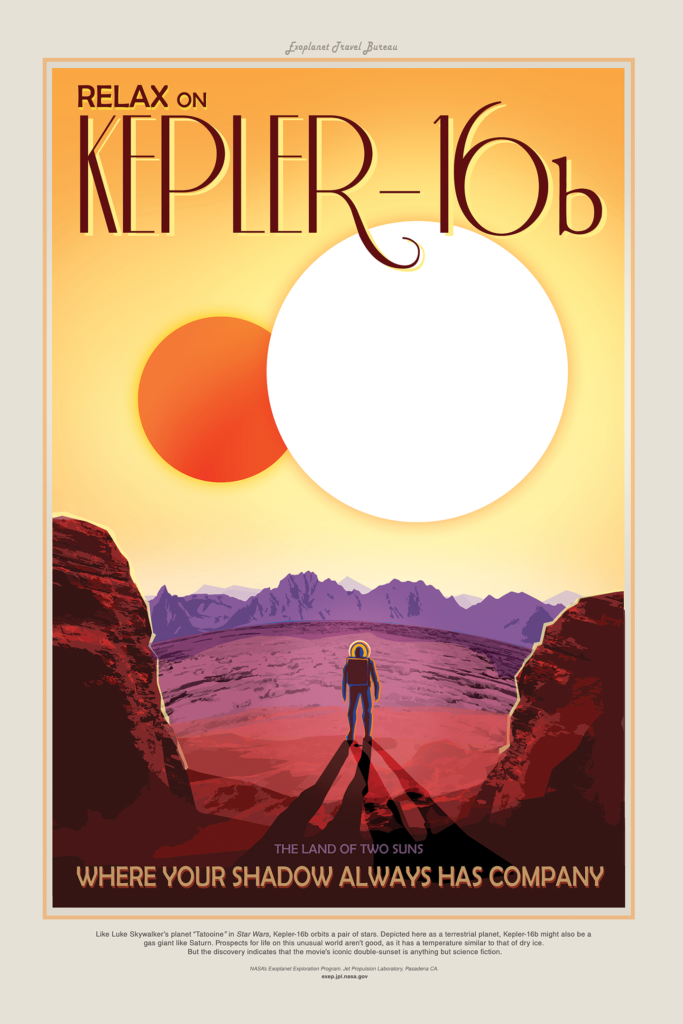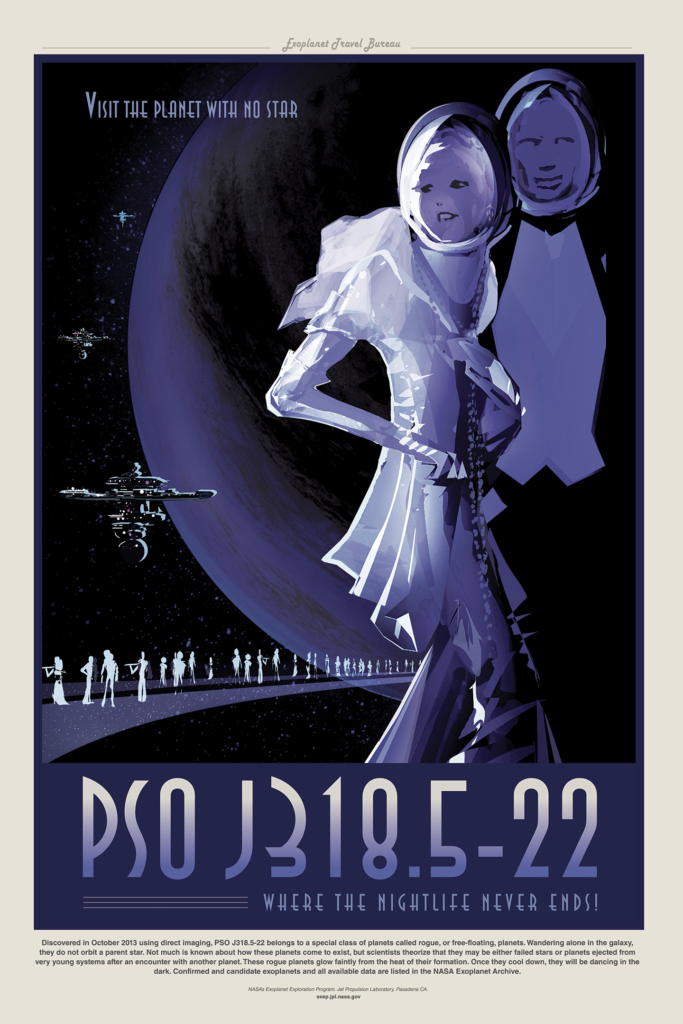Across the universe: NASA hopes at-home activities will inspire future astronomers
Mar 31, 2020, 2:30 PM | Updated: Apr 2, 2020, 5:54 am

Courtesy NASA
If you’re one of the more than 1.5 billion Earthlings self-isolating because of COVID-19, a new series of posters from NASA are aimed at inspiring you to take a trip across the universe.
NASA took a page from the National Park Service and created a collection of 14 posters they hope will inspire a new generation of innovators and explorers they’ve called Visions of the Future.
The posters and NASA
The posters were originally inspired after the Director of NASA’s Jet Propulsion Lab was on vacation at the Grand Canyon and saw some old Works Progress Administration (WPA) posters inviting travelers to come and see the Grand Canyon. The director asked if NASA could give a similar treatment to a series of posters they were doing on the exoplanets.
“The old WPA posters did a really great job delivering a feeling about a far-off destination,” one of the JPL illustrators, Joby Harris says, “They were created at a time when color photography was not very advanced, in order to capture the beauty of the national parks from a human perspective. These posters show places in our solar system (and beyond) that likewise haven’t been photographed on a human scale yet — or in the case of the exoplanets might never be, at least not for a long time. It seemed a perfect way to help people imagine these strange, new worlds.
So NASA created a series of WPA-inspired posters showing off the far reaches of the galaxy to inspire people to realize the stars aren’t as far as we used to think.
“The point,” David Delgado, a creative strategist at JPL says, “was to share a sense of things on the edge of possibility that is closely tied to the work our people are doing today. The JPL director has called our people “architects of the future.”
In addition to these posters, NASA has a host of other things to do at home as they launch their NASA at Home site.
“We know people everywhere, especially students, are looking for ways to get out of the house without leaving their house,” said Bettina Inclán, associate administrator for NASA’s Office of Communications. “NASA has a way for them to look to the skies and see themselves in space with their feet planted safely on the ground, but their imaginations are free to explore everywhere we go. We’ve put that information at their fingertips.”
Take the tour
The Grand Tour
The Grand Tour makes reference to the route taken by the Voyager 2 spacecraft that went out to visit our four outer planets.
NASA’s Voyager mission took advantage of a once-every-175-year alignment of the outer planets for a grand tour of the solar system. The twin spacecraft revealed details about Jupiter, Saturn, Uranus and Neptune – using each planet’s gravity to send them on to the next destination. Voyager set the stage for such ambitious orbiter missions as Galileo to Jupiter and Cassini to Saturn. Today, both Voyager spacecraft continue to return valuable science from the far reaches of our solar system.
Mars
The designers of the posters say that this one of Mars was the very last poster that they created in the series. They hid a few “easter eggs” inside, saying that the rover has spelled out JPL on the ground in Morse code.
NASA’s Mars Exploration Program seeks to understand whether Mars was, is, or can be a habitable world. Missions like Mars Pathfinder, Mars Exploration Rovers, Mars Science Laboratory and Mars Reconnaissance Orbiter, among many others, have provided important information in understanding of the habitability of Mars. This poster imagines a future day when we have achieved our vision of human exploration of Mars and takes a nostalgic look back at the great imagined milestones of Mars exploration that will someday be celebrated as “historic sites.”
Earth
You’re already pretty familiar with this place.
There’s no place like home. Warm, wet and with an atmosphere that’s just right, Earth is the only place we know of with life – and lots of it. JPL’s Earth science missions monitor our home planet and how it’s changing so it can continue to provide a safe haven as we reach deeper into the cosmos.
Venus
“We tried a few different designs for Venus, starting with the surface, but the intent was to show things people might find pleasant, and Venus’ surface is anything but. The scene is of a city in the clouds as it transits Mercury across the sun. The Morse code for the number 9 is written on the side (signifying the inhabitants are ‘on cloud 9’),” says Lois Kim who did the typography of this poster.
The rare science opportunity of planetary transits has long inspired bold voyages to exotic vantage points – journeys such as James Cook’s trek to the South Pacific to watch Venus and Mercury cross the face of the Sun in 1769. Spacecraft now allow us the luxury to study these cosmic crossings at times of our choosing from unique locales across our solar system.
Ceres
The big sign in this poster is inspired by the gateway in Reno that announces it as “the biggest little city in the world.”
“We kind of thought that might suit Ceres. It’s the biggest object in the asteroid belt between Mars and Jupiter and probably has a lot of water ice underground,” says creative strategist David Delgado
Ceres is the closest dwarf planet to the Sun. It is the largest object in the main asteroid belt between Mars and Jupiter, with an equatorial diameter of about 965 kilometers. After being studied with telescopes for more than two centuries, Ceres became the first dwarf planet to be explored by a spacecraft, when NASA’s Dawn probe arrived in orbit in March 2015. Dawn’s ongoing detailed observations are revealing intriguing insights into the nature of this mysterious world of ice and rock.
Jupiter
NASA says that the auroras on Jupiter are something to behold. They show up 100 times more powerful than on Earth and form a glowing ring bigger than the earth around each of its poles. NASA’s Juno mission is already out studying the gas giant.
The Jovian cloudscape boasts the most spectacular light show in the solar system, with northern and southern lights to dazzle even the most jaded space traveler. Jupiter’s auroras are hundreds of times more powerful than Earth’s, and they form a glowing ring around each pole that’s bigger than our home planet. Revolving outside this auroral oval are the glowing, electric “footprints” of Jupiter’s three largest moons. NASA’s Juno mission will observe Jupiter’s auroras from above the polar regions, studying them in a way never before possible.
Enceladus
Enceladus is one of Saturn’s 62 moons, and the home of the galaxy’s “Cold Faithful.” NASA’s Cassini mission found that the small icy moon is home to a global ocean.
The discovery of Enceladus’ icy jets and their role in creating Saturn’s E-ring is one of the top findings of the Cassini mission to Saturn. Further Cassini mission discoveries revealed strong evidence of a global ocean and the first signs of potential hydrothermal activity beyond Earth – making this tiny Saturnian moon one of the leading locations in the search for possible life beyond Earth.
TITAN
Titan is Saturn’s largest moon and about the size of Mercury. It is the only body in the solar system to have a nitrogen-rich atmosphere besides Earth. It’s also the only other body in the solar system that has seasons.
Frigid and alien, yet similar to our own planet billions of years ago, Saturn’s largest moon, Titan, has a thick atmosphere, organic-rich chemistry and a surface shaped by rivers and lakes of liquid ethane and methane. Cold winds sculpt vast regions of hydrocarbon-rich dunes. There may even be cryovolcanoes of cold liquid water. NASA’s Cassini orbiter was designed to peer through Titan’s perpetual haze and unravel the mysteries of this planet-like moon.
Europa
Moving on to another moon, this one around Saturn’s neighbor, Jupiter. Scientists believe that the surface of Europa is one of the most promising places in our solar system to find an environment suitable for some form of life beyond our own blue planet.
Astonishing geology and the potential to host the conditions for simple life make Jupiter’s moon Europa a fascinating destination for future exploration. Beneath its icy surface, Europa is believed to conceal a global ocean of salty liquid water twice the volume of Earth’s oceans. Tugging and flexing from Jupiter’s gravity generates enough heat to keep the ocean from freezing. On Earth, wherever we find water, we find life. What will NASA’s Europa mission find when it heads for this intriguing moon in the 2020s
51 Pegasi b
51 Pegasi b is widely accepted as the first exoplanet to be discovered. It’s about 50 light-years away in the constellation of Pegasus.
While there is much debate over which exoplanet discovery is considered the “first,” one stands out from the rest. In 1995, scientists discovered 51 Pegasi b, forever changing the way we see the universe and our place in it. The exoplanet is about half the mass of Jupiter, with a seemingly impossible, star-hugging orbit of only 4.2 Earth days. Not only was it the first planet confirmed to orbit a sun-like star, it also ushered in a whole new class of planets called Hot Jupiters: hot, massive planets orbiting closer to their stars than Mercury. Today, powerful observatories like NASA’s Kepler space telescope continue the hunt for distant planets.
Kepler 186f
Kepler 186f is out about 582 light-years away from Earth. It was the first Earth-sized planet that was discovered in the habitable or “Goldilocks” zone of another star.
Kepler-186f is the first Earth-size planet discovered in the potentially ‘habitable zone’ around another star, where liquid water could exist on the planet’s surface. Its star is much cooler and redder than our Sun. If plant life does exist on a planet like Kepler-186f, its photosynthesis could have been influenced by the star’s red-wavelength photons, making for a color palette that’s very different than the greens on Earth. This discovery was made by Kepler, NASA’s planet hunting telescope.
HD 40307g
HD 40307g is another exoplanet that’s in the habitable zone of another star. This one, though, is only about 42 light-years away. It’s also about eight times the mass of Earth, which means if you visit, you’ll weigh a lot more.
Twice as big in volume as the Earth, HD 40307g straddles the line between “Super-Earth” and “mini-Neptune” and scientists aren’t sure if it has a rocky surface or one that’s buried beneath thick layers of gas and ice. One thing is certain though: at eight time the Earth’s mass, its gravitational pull is much, much stronger.
Trappist-1e
Trappist-1e is another earth-sized exoplanet out orbiting in the habitable zone of another alien star. The star it orbits is what scientists call an ultra-cool dwarf star.
Some 40 light-years from Earth, a planet called TRAPPIST-1e offers a heart-stopping view: brilliant objects in a red sky, looming like larger and smaller versions of our own moon. But these are no moons. They are Earth-sized planets in a spectacular planetary system outside our own. These seven rocky worlds huddle around their small, dim, red star, like a family around a campfire. Any of them could harbor liquid water, but the planet shown here, fourth from the TRAPPIST-1 star, is in the habitable zone, the area around the star where liquid water is most likely to be detected. This system was revealed by the TRAnsiting Planets and PlanetesImals Small Telescope (TRAPPIST) and NASA’s Spitzer Space Telescope. The planets are also excellent targets for NASA’s James Webb Space Telescope. Take a planet-hopping excursion through the TRAPPIST-1 system.
55 Cancri e
55 Cancri e is about twice the size of Earth, but instead of being covered with oceans of water, it’s covered in an ocean of lava.
A global ocean of lava under sparkling, silicate skies reflecting the lava below: what better choice for an extrreme vacation? Planet Janssen, or 55 Cancri e, orbits a star called Copernicus only 41 light years away. The molten surface is completely uninhabitable, but you’ll ride safely above, taking in breathtaking views: the burning horizon, Janssen’s sister planet Galileo hanging in a dark sky, and curtains of glowing particles as you glide across the terminator to Janssen’s dark side. Book your travel now to the hottest vacation spot in the galaxy, 55 Cancri e
Kepler-16b
If you’re a fan of Star Wars, well, Kepler 16-b is the place to visit. Orbiting two suns, this looks a lot like Tatooine.
Like Luke Skywalker’s planet “Tatooine” in Star Wars, Kepler-16b orbits a pair of stars. Depicted here as a terrestrial planet, Kepler-16b might also be a gas giant like Saturn. Prospects for life on this unusual world aren’t good, as it has a temperature similar to that of dry ice. But the discovery indicates that the movie’s iconic double-sunset is anything but science fiction.
PSO J318.5-22
PSO J318.5-22 is different than everywhere else that we’ve seen. That’s because it belongs to a special class of what scientists call “rogue” planets. Discovered in 2013, team leader Michael Liu said, “We have never before seen an object free-floating in space that looks like this. It has all the characteristics of young planets found around other stars, but it is drifting out there all alone.”
Discovered in October 2013 using direct imaging, PSO J318.5-22 belongs to a special class of planets called rogue, or free-floating, planets. Wandering alone in the galaxy, they do not orbit a parent star. Not much is known about how these planets come to exist, but scientists theorize that they may be either failed stars or planets ejected from very young systems after an encounter with another planet. These rogue planets glow faintly from the heat of their formation. Once they cool down, they will be dancing in the dark


